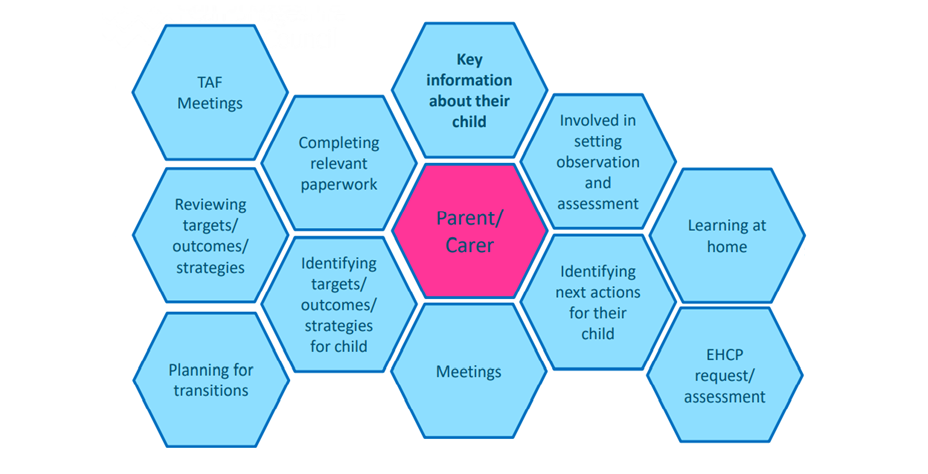Page Contents

Partnership with Parents and Carers
Parents or carers of children with emerging needs and SEND are often juggling many roles in supporting their child and hold a wealth of key information and knowledge about their child. It is important that settings foster partnerships with parents/carers relating to all aspects of their child’s needs and support, however, as we can see from the illustration there may be many involvements with the family and settings should be sensitive to the needs of the family and work with them to establish what they will be involved with and how.


